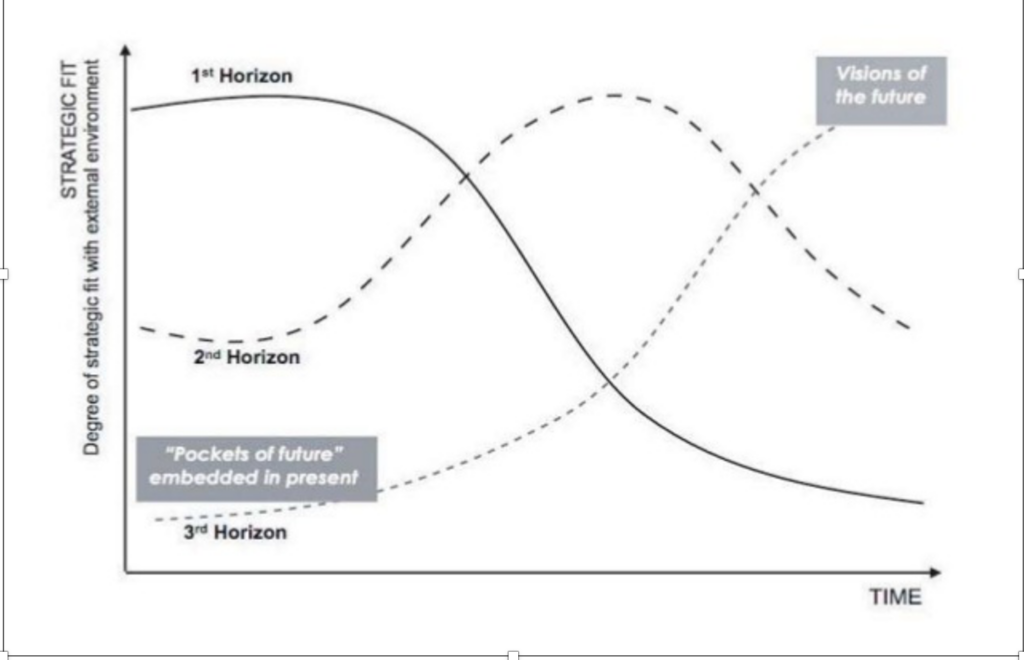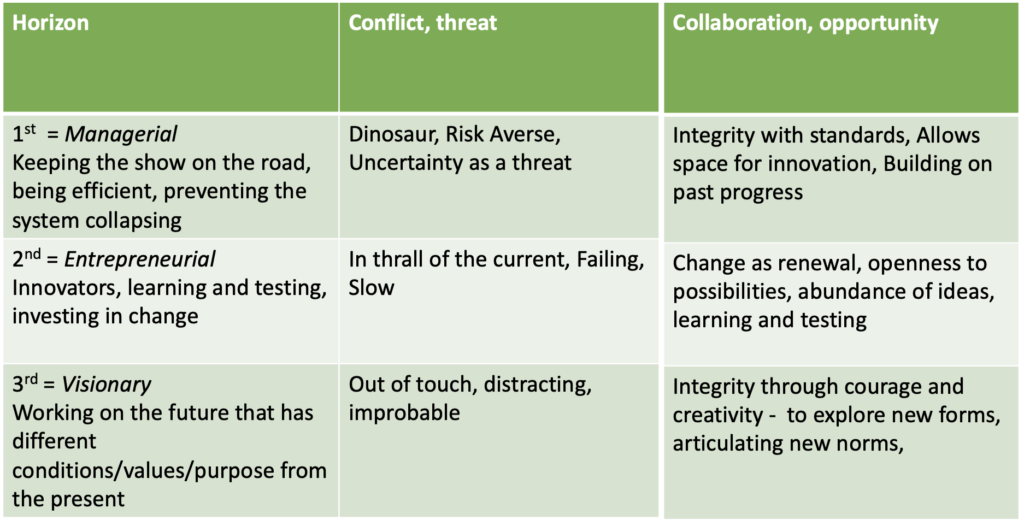Three Horizons is one of those simple Futures tools that works really well in making sense of complex issues. It can be used in the background, when we just want to be more informed and intentional about change. It can also be widened and deepened in working explicitly with groups of people.
At its core, it’s inviting us to think about the future as connected to where we are now. That for every present moment, we can see the current system (Horizon 1), the future system (Horizon 3), and the transitional system (Horizon 2).

As with the Futures Triangle, it’s also inviting us to consider our own preferences to validate one horizon’s importance over another; and to develop the competence to notice, value and work with all three at any one time.
Working on ‘wicked’ problems that are connected to a myriad of people and issues, where we really can’t rely on past performance, we have to be able to suspend judgement and experiment with other people.
Where we enter into these environments with suspicion based on difference, we won’t be able to immerse our bodies and brains into the experience. We can’t use our full cognitive capacity. We hold back to protect ourselves.
Three Horizons helps by naming and teaching us about the value of our preferences. It explains the context for them. It enables us to make sense of our differences, validate our differences and work with them.
Bill Sharpe’s practice covers how we might relate to other people when we are perceiving the threat, and when we are perceiving the opportunity. I’ve adapted what’s in his book to this table.

At this month’s Futures Practice Hour we used a set of questions to notice what’s occurring in each Horizon. This was our starting point to understand the people and the issues.
Here’s three questions for each of the Three Horizons to get you started. You can practice on your own, or pair up with a buddy.
Begin by introducing your topic with:
What’s occurring?
Who is involved?
What concerns have you got?
Horizon 1
What stories do people keep on telling? (What’s important to people, what’s showing their identity)
What innovations are sustaining it? (What’s keeping it going, but perhaps preventing investment in step-changes?)
Who is invested in the current system? (Why are they invested in it? How can you seek to understand and work with them?)
Horizon 3
What is inspiring you? (What could be examples of the future that is more fit for purpose?)
Who is inspiring you? (Why are they inspiring you? How can you seek to understand and work with them?)
Who is investing resources in a step-change from now? (Why are they doing this? How can you seek to understand and work with them?)
Horizon 2
What work needs to stop (or be stopped)? (What is holding the system back from developing?)
What transformations can you spot? (What do you know about them? How can you support them scaling?)
Who is investing themselves in learning and testing? (Why are they doing this? How can you seek to understand and work with them?)
I would love to hear how you get on using these questions in this framework.
Join me on 25 April for the next group learning session where we will build on Three Horizons and the Futures Triangle.
First Diagram from Bill Sharpe including 2013; Table adapted from Bill Sharpe ‘The Patterning of Hope’ 2013 and 2020.
